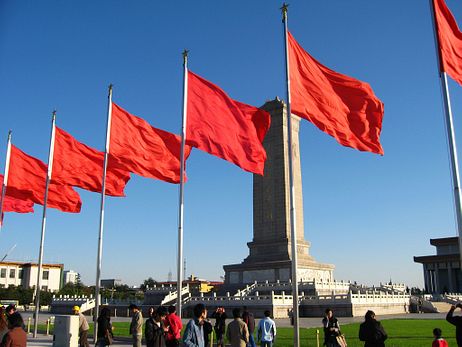China has indicated that it is going ahead with building mega-dams on the lower reaches of the Yarlung Tsangpo, which flows from Tibet into northeast India.Beijing’s control over the key rivers flowing into India gives it a chokehold on India’s economy, effectively crippling India’s interests in the North East region.
The country’s occupation of Tibet, which is often called the “Third Pole”, owing to its vast freshwater and glacial resources, gives it a strategic stranglehold to dominate the bilateral discourse with India.
The rivers emerging from the Tibetan plateau remain vital for about nine neighboring nations in the region and the disputes about the distribution of waters have lingered for decades.
However, the new Chinese belligerence is explained by the tensions in Ladakh that have worsened this year with India. At least 20 Indian soldiers were killed while clashing with PLA in the region this year, while the count of Chinese casualties remains unknown.
India now fears Beijing could use dams and other water infrastructure as a strategic tool to expand its control over the region, analysts at South China Morning Post (SCMP) state.
Since 2010, China has planned hydropower projects on the river, known in India as the Brahmaputra, to harness energy in the middle reaches of the river. Now the country is focusing on the lower reaches of the river, closer to India, which could create challenges for the river’s utility in India.
According to SCMP, at least 11 hydroelectric projects along the river have been operating or being planned by China over the past decade. The largest among the three known to be in operation is Zangmu, which started to fully operate in 2015.
Hydropower stations in Bayu, Jiexi, Langta, Dakpa, Nang, Demo, Namcha, and Metok towns in Tibet are either on the drawing board or under construction.
The middle basin of the Yarlung river is closer to the Line of Actual Control (LAC) – a 3,488 km unmarked de facto boundary between China and India that has seen decades of claims and counterclaims.The country’s new plans for harnessing the lower basin could potentially dry up the resources of the river resulting in a significant challenge to the Indian needs.
“These (dam projects) have instigated worries in India as Chinese construction of dams close to the LAC, mixed with the India-China boundary disputes, assumes to be carrying strategic intents while creating a strategic divide between India and its Himalayan rivers,” SCMP quoted Jagannath Panda, a research fellow at New Delhi’s Manohar Parrikar Institute for Defence Studies and Analyses, as saying.
He also noted the Chinese foreign ministry’s recent claim that Beijing had never recognized Arunachal Pradesh as an alarming sign that China might use the dams and other water infrastructure as “a strategic tool to expand its control over the region”.And as the recent clashes on the Sino-Indian border have made clear, India needs to assess how China might “weaponize” its advantage over those countries downstream, observes Lowy Institute.
The two rival countries are signatories to the data-sharing treaty signed in 2008, for the Sutlej and Brahmaputra in order to better manage the shared watercourses. Agreements like these can have a positive effect on water management by helping to prepare for and control floods, but since China has access to the data, it could use this dependence to exploit India by withholding that hydrological data.
When the two countries clashed in Doklam in 2017, China refused to divulge critical hydrological data for the Brahmaputra and Sutlej rivers, which reportedly resulted in floods in the states of Assam and Uttar Pradesh.
China is reported to have been responsible for causing the build-up of a lake, in 2004, on the Parechu river, which is a tributary of the Sutlej, threatening to cause floods in lower down in India’s Sutlej valley.
The country refused requests by India to send scientists and engineers to the site, and it was suspected that China knowingly created “a liquid bomb”, an artificial lake unleashed deliberately to devastate downstream areas.
The concerns of China creating another liquid bomb to effectively breach and weaponize the waters of the Parechu lake were again raised in June 2020, when a rise of 12 to 14 meters was observed in the river.
Experts are lamenting the lack of a mutually agreed dispute-settlement mechanism for the two countries to avoid such confrontations, which leaves little options for India. The Lowy Institute also offers a viable solution for India, to lead a counter-coalition of countries that share transboundary rivers, and forge a common institutional set-up for better trans-boundary management of shared rivers.
However, until the bilateral relations improve between the two countries, and an agreement is reached at the tense Ladakh border, any solution to the water wars is unlikely to emerge.
The two countries recently held the eighth round of military talks to diffuse tensions at the border, and there were little indications of the two countries permanently solving the boundary dispute.
[powr-flickr-gallery id="a48424ea_1605121857669"]


























































































